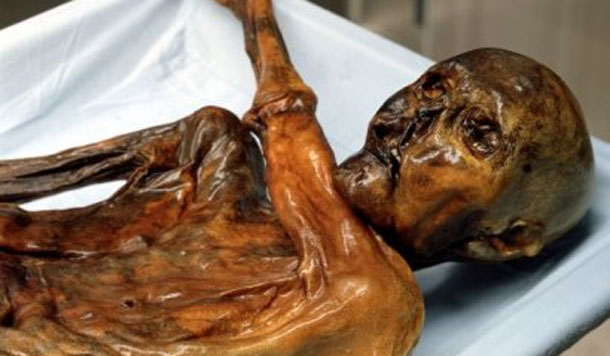Science News
The Iceman's Health Issues

One of the most famous corpses was in the headlines today—Otzi the iceman, who died in the Alps around 5,300 years ago and whose well-preserved corpse was discovered in 1991.
Insights into Ötzi’s sequenced genome were published today in Nature Communications.
Previous studies found that the iceman was killed by an arrow, from behind. But today’s paper suggests that many other health issues could have caught up with him, sooner or later.
Ötzi was lactose intolerant. But that was the least of his problems: he was also predisposed to cardiovascular diseases, according to New Scientist.
Ötzi was more likely than most to develop heart disease. He carried one genetic mutation that in modern humans raises the risk of coronary heart disease by 40 per cent, and two others that made him prone to a build-up of fat in the linings of his arteries.
But wait, there’s more. The authors of the study also identified traces of bacteria from the genus Borrelia, which are responsible for causing infections and are transmitted by ticks. Nature News has more information:
[The head of the Institute for Mummies and the Iceman Albert] Zink’s team found almost two-thirds of the genome of Borrelia borgdorferi, a bacterium that causes Lyme disease. Zink found no other telltale signs of Lyme disease in Ötzi’s preserved tissues, but he speculates that tattoos on the iceman’s spine and ankles and behind his right knee could have been an attempt to treat the joint pain that occurs when the condition goes untreated.
It’s not all bad-health news, though. Perhaps he had his looks. His eyes and hair were brown and his genome puts his closest present-day relatives in Sardinia, raising many more questions…
Why is it that Ötzi does not resemble the people from the region that he was indigenous to? —Discover
Perhaps Ötzi’s kind once lived across Europe, before dying out or interbreeding with other groups everywhere except on those islands. —Nature News
Perhaps the Iceman’s parents were involved in trade. —Scientific American
Of course, this means more studies are required on the already famous frozen corpse… Stay tuned.
Image © South Tyrol Museum of Archaeology